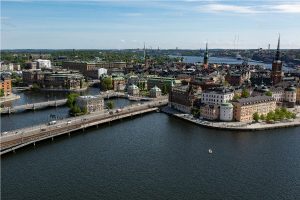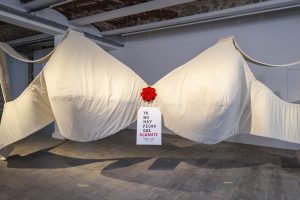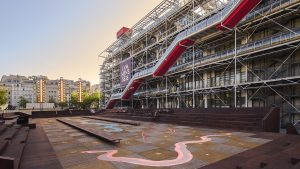Anish Kapoor Poured 1,000 Litres Of ‘Blood-Red’ Liquid From A North Sea Gas Rig In A Landmark Protest
Renowned Indian-British artist Anish Kapoor joins forces with Greenpeace climbers who scale a working Shell platform in the North Sea, unveiling a searing artwork titled ‘BUTCHERED’.
- 19 Aug '25
- 12:46 pm by Simran Almeida
Unwittingly, we are all aware of the devastating toll of climate change. As a searing response, renowned Indian-British artist Anish Kapoor has unveiled a provocative new artwork titled ‘BUTCHERED.’ This landmark artwork is installed on the Skiff gas platform, which is operated by Shell in the North Sea, off the English coast between Hull and Norwich. Unfurled last week, the art was created in collaboration with the environmental non-profit group Greenpeace, spotlighting an urgent call for taxing the fossil fuel industry and it’s perils of global warming. As the world’s first artwork conceived for an active offshore gas site, it spreads across the platform’s façade, recasting this centre of fossil fuel extraction into a stage for climate protest.
Translating Climate Catastrophe
From wildfires in Spain driven by record-breaking European heat to flash floods that ravaged communities in China and northern India, the climate crisis is making its presence felt worldwide. Against this backdrop of global climate devastation, Kapoor sought to translate outrage into a powerful visual statement. “I wanted to make something visual, physical, visceral to reflect the butchery they are inflicting on our planet: a visual scream that gives voice to the calamitous cost of the climate crisis, often on the most marginalised communities across the globe,” Kapoor explains. He adds, “My work ‘BUTCHERED’ is also a tribute to the heroic work done in opposition to this destruction, and to the tireless activists who choose to disrupt, disagree and disobey.” Infused with a profound reverence for nature, Kapoor’s intervention emerges as a scathing indictment of fossil fuel dependency. It also marks a striking expansion of his artistic lexicon into the arena of climate activism.
Read More: Digital Bodies: An Insight Into Samyukta Madhu’s Indo-Futuristic Metaverse
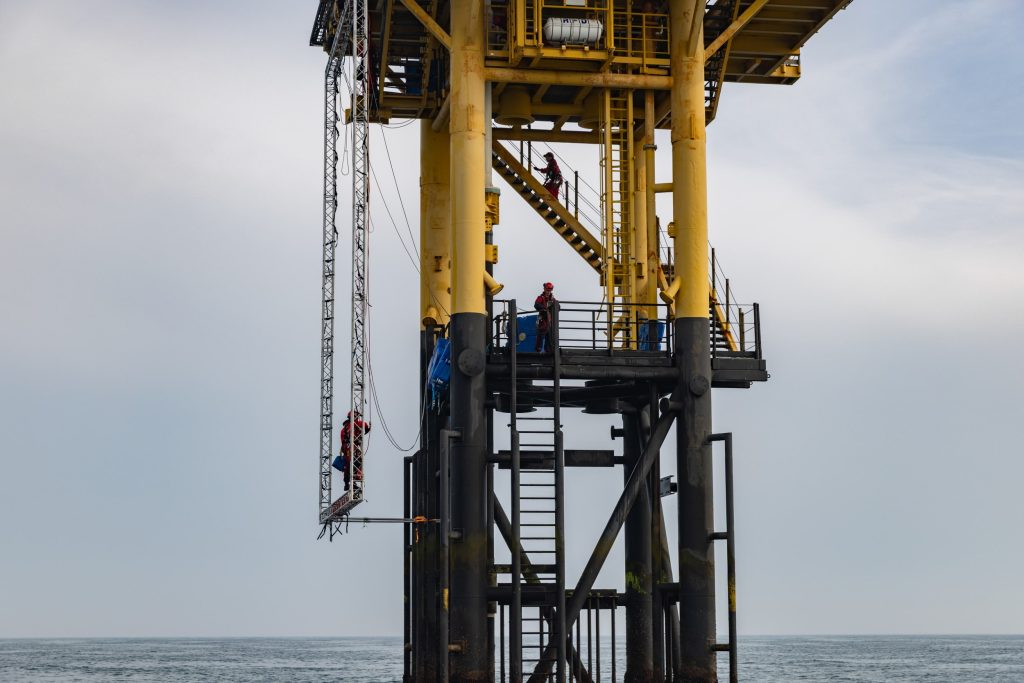
A Scarlet Manifesto
Early last week, a crew of seven Greenpeace climbers who had waited for the most favourable weather conditions sailed on board the Arctic Sunrise (a Greenpeace ship). Their objective was to scale the gas rig situated 45 nautical miles off the coast of Norfolk. On the platform’s façade, a colossal 12 x 8-metre truss was mounted with a vast canvas stretched across it. The activists hoisted a high-pressure hose to the canvas, elevating it 52 feet above the sea. From there, they gushed 1,000 litres of ‘blood-red liquid,’ a concoction of seawater, beetroot powder and non-toxic food-based dye, which cascaded down in a torrent of crimson to evoke the image of blood. “The carbon dioxide released by burning fossil fuels is invisible, but we are witnessing the devastation that its extraction wreaks on our world,” explains Kapoor.
Also read: Pixel Prodigies: 5 South Asian Artists Re-Programming The Canvas With A.I.
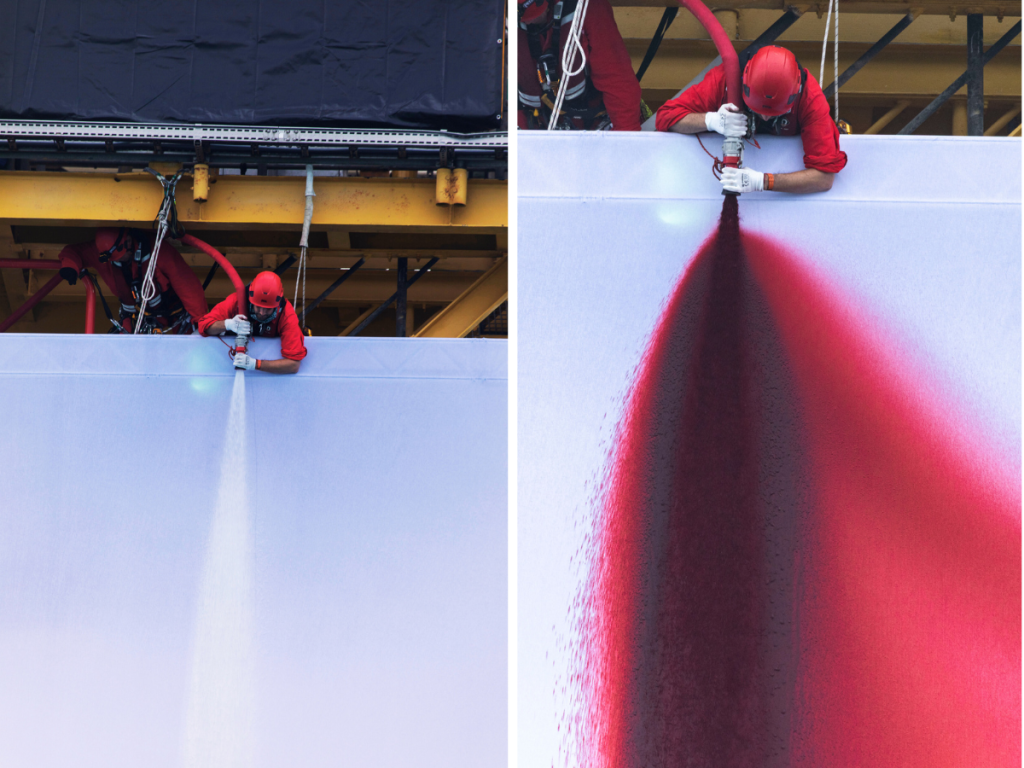
However, there was never any certainty that the work could be brought to fruition; Wednesday’s action marked a second attempt; the first endeavour staged last year had faltered before it could take form. Kapoor explains, “BUTCHERED attempts to bring home the horror, giving voice to the moral and physical destruction caused by ruthless profiteers.” The artist now stands among the latest signatories of the Polluter Pays Pact, a Greenpeace initiative rallying firefighters, political leaders, unions, humanitarian groups, and tens of thousands of citizens worldwide. Their call is unequivocal: compel the world’s biggest polluters to bear the cost of the climate devastation they have wrought.
Also Read: The Stories Behind Objects: Tej Chauhan’s Approach To Human-Centric Design
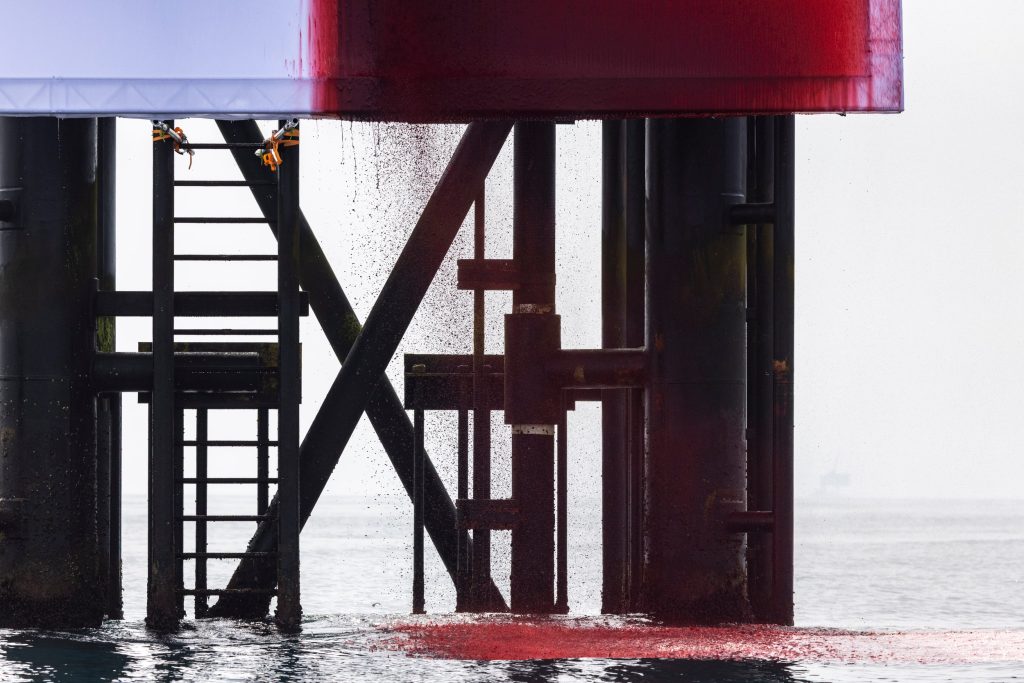
While this striking installation at sea marks a new chapter, it is not Kapoor’s maiden voyage into protest. The Turner Prize-winning artist is revered for his monumental installations and transformative public sculptures, and is the force behind landmarks such as the ArcelorMittal Orbit in London’s Olympic Park and Chicago’s iconic Cloud Gate—dubbed ‘The Bean.’ The latter even found itself in the spotlight earlier this week, serving as the unlikely stage for a sharp-witted satirical protest. Back in 2019, he joined a chorus of leading artists urging London’s National Portrait Gallery to sever its ties with oil giant British Petroleum (BP).
Also Read: Alchemies, A Journey Through Bharti Kher’s Most Ambitious UK Exhibition
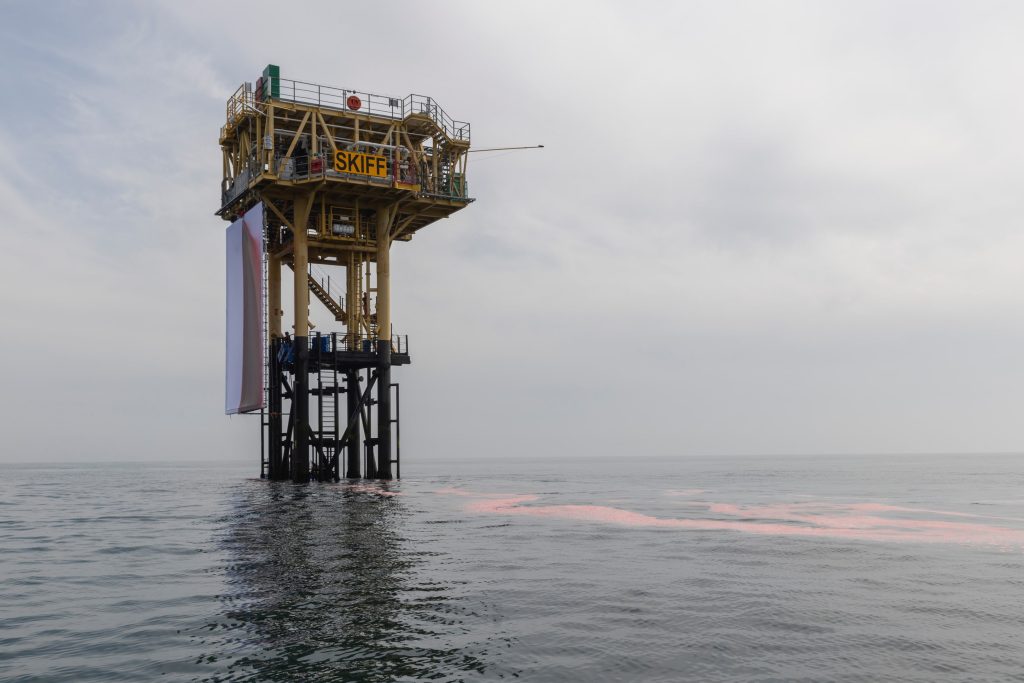
Custodians Of The Environment
This protest comes amid mounting criticism of Shell’s record-breaking profits, as the UK experiences its fourth heatwave of the season, which has triggered climate crises in parts of Glasgow. The gas drawn from Skiff, which began operations in 2000, is channelled to the Bacton Gas Terminal in Norfolk, where it flows into the national grid, fuelling homes, powering stations, and driving industry across the UK. However, according to an April 2025 study published in the scientific journal ‘Nature,’ Shell’s carbon emissions over the past three decades are estimated to have inflicted more than $1.42 trillion in climate-related damage worldwide. “Extreme weather is hitting close to home, but the extraction of fossil fuels driving the climate crisis is often out of sight,” notes Philip Evans, Senior Campaigner at Greenpeace UK. He adds, “While the fossil fuel sector makes billions from climate destruction, ordinary people are left to pick up the rising costs of flood damage, droughts and wildfires.”
Also Read: Six Influential South Asian Women Artists Making A Global Mark
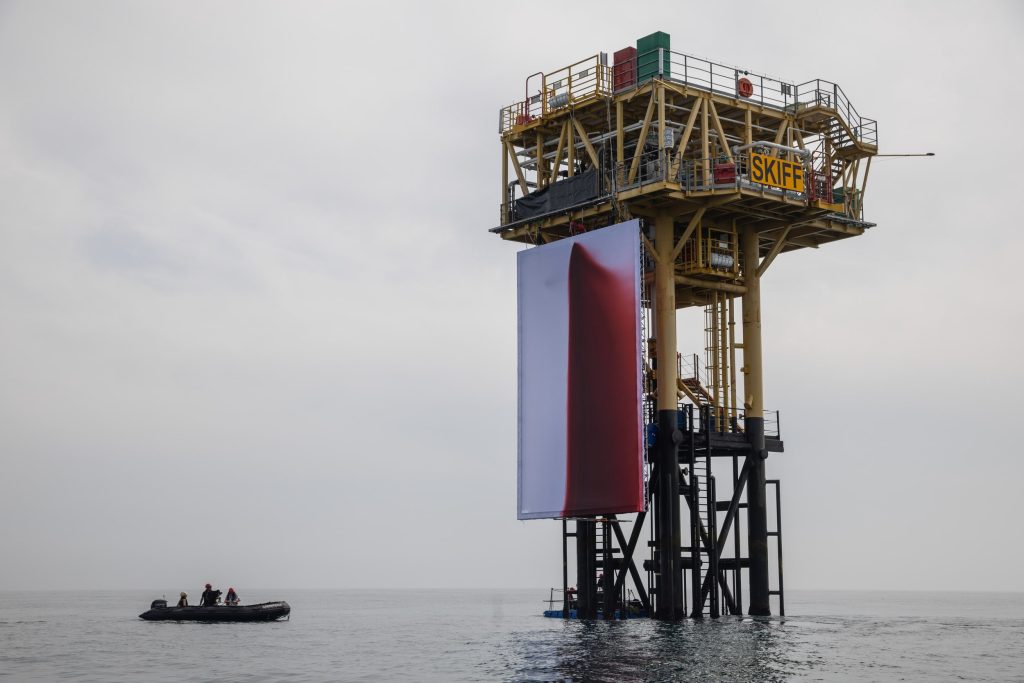
Greenpeace has long been at the forefront of challenging fossil fuel operations and other environmentally harmful installations at sea. In a notable case the previous year, Greenpeace activists spent 13 days occupying a moving oil platform off the Canary Islands, leading Shell to settle a high-profile, multimillion-dollar lawsuit. Despite this legal setback, Shell continues to push forward, planning a major expansion of its operations with 700 new oil and gas projects in the pipeline, even in the face of clear warnings from scientists and energy experts. “This artwork is a visual gut-punch that makes visible the suffering and damage caused by the oil and gas industry, right at the place where the harm begins,” explains Evans.
Also Read: The Offbeat Sari Is London’s First Large-Scale Exhibition That Examines The Contemporary Indian Sari
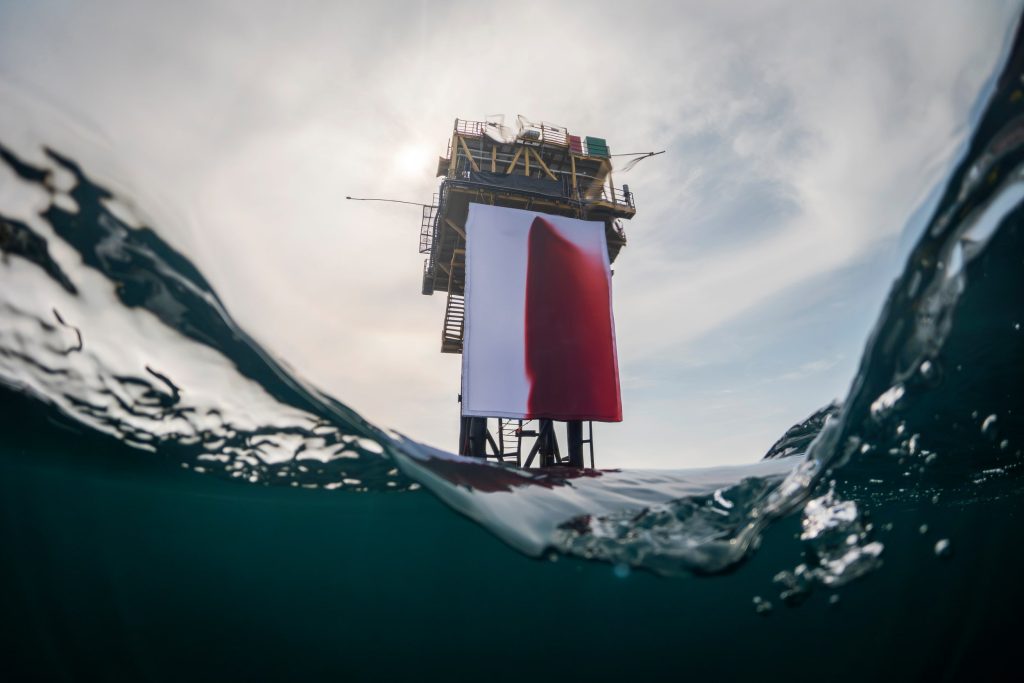
With this protest, Greenpeace calls on the UK government to take action by imposing new polluter taxes on oil and gas giants. These taxes on fossil fuel extraction and shareholders could fund communities hit hardest by climate change, while ensuring accountability for polluting corporations and reflecting the support of nearly eight in ten people in the UK. As urgency mounts, UN reports highlight that while many nations aim for net-zero emissions by 2050, global emissions must be halved by 2030, requiring a 30% cut in coal, oil, and gas production and consumption. Confronting this climate crisis, Anish Kapoor’s “BUTCHERED is an action that happens at the place where this violation starts – a gas platform in the middle of the sea.” It serves as a call to conscience and a striking testament to the transformative power of art.












